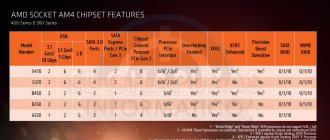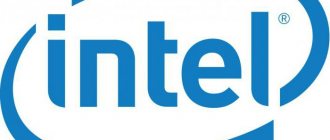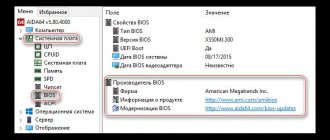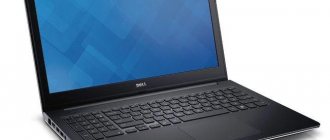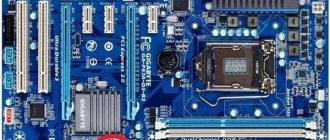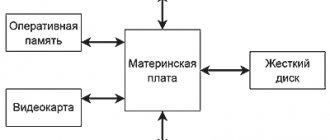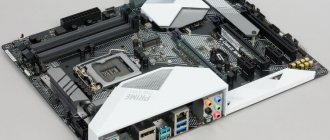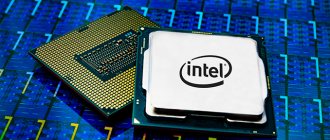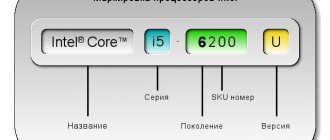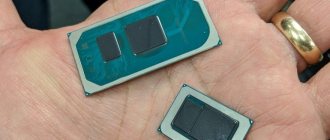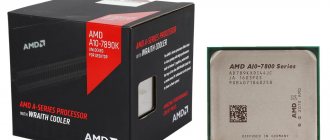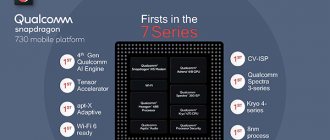Hard times have come for Intel: for several years in a row, this developer and chip manufacturer could do whatever they wanted - there was simply no competition in the field of CPUs for the consumer segment of the market.
And although AMD with its APUs closed small market niches and supplied such large manufacturers of game consoles as Sony, Microsoft and Nintendo, any buyer who was looking for a good laptop or gaming PC always opted for Intel and its current platform. With the arrival of AMD Ryzen, the CPU battle we've been waiting for is finally heating up again.
At the same time, the current generations of Intel processors, which are called Kaby Lake and Skylake and use socket 1151, cannot be considered bad and outdated at all. Quite the opposite: applications that use only one or two cores benefit from higher clock speeds, multi-threading, and boost clock speeds.
In the area of motherboards, there are currently a large number of options depending on the chipset used: users who prefer high-end equipment choose the Z170 or the Z270 with maximum equipment. In the middle class, the B250 chipset is most widespread.
Intel Z370
The Z370 chipset, which appeared first, is one of the most advanced options for Coffee Lake processors. Like other chipsets called Z, the Intel Z370 provides the ability to overclock the CPU
and
RAM
and allows you to effectively
parallelize PCI-E 3.0 lines
, which is useful if you want to build a gaming system with two or more video cards.
Due to the fact that the chipset came out earlier than the others, it does not support USB 3.1 and Intel CNVi (a set of components that allows you to implement a built-in high-speed WI-Fi module) out of the box, but thanks to the efforts of manufacturers, some Z370 motherboards now support these technologies there is.
The Z370 is an excellent option for powerful gaming computers with overclockable processors (marked with the letter K, for example, Intel Core i5-8600K) or more than one graphics card. In other cases, the capabilities of the chipset are excessive, and it is not worth overpaying for them.
Processors for Socket LGA 1151 v1
Celeron
Table with a list of Celeron processors for Socket 1151 v1. They are usually supported by motherboards with 100 and 200 series chipsets: H110, B150, Q150, H170, Q170, Z170, B250, Q250, H270 and Z270.
| Processor name | Buy on AliExpress | Number of cores (threads) | Base frequency | L2 cache | L3 cache | Integrated Graphics | Graphics frequency | TDP |
| Celeron G3900 | 2 (2) | 2.8 GHz | 2 × 256 KiB | 2 MiB | HD Graphics 510 | 350–950 MHz | 51W | |
| Celeron G3920 | 2 (2) | 2.9 GHz | 2 × 256 KiB | 2 MiB | HD Graphics 510 | 350–950 MHz | 51W | |
| Celeron G3930 | 2 (2) | 2.9 GHz | 2 × 256 KiB | 2 MiB | HD Graphics 510 | 350–950 MHz | 51W | |
| Celeron G3900T | 2 (2) | 2.6 GHz | 2 × 256 KiB | 2 MiB | HD Graphics 510 | 350–950 MHz | 35 W |
Pentium
Table with a list of Pentium processors for Socket 1151 v1. They are usually supported by motherboards with 100 and 200 series chipsets: H110, B150, Q150, H170, Q170, Z170, B250, Q250, H270 and Z270.
| Processor name | Buy on AliExpress | Number of cores (threads) | Base frequency | L2 cache | L3 cache | Integrated Graphics | Graphics frequency | TDP |
| Pentium G4400 | 2 (2) | 3.3 GHz | 2 × 256 KiB | 3MiB | HD Graphics 510 | 350–1000 MHz | 54 W | |
| Pentium G4500 | 2 (2) | 3.5 GHz | 2 × 256 KiB | 3MiB | HD Graphics 530 | 350–1050 MHz | 51W | |
| Pentium G4520 | 2 (2) | 3.6 GHz | 2 × 256 KiB | 3MiB | HD Graphics 530 | 350–1050 MHz | 51W | |
| Pentium G4400T | 2 (2) | 2.9 GHz | 2 × 256 KiB | 3MiB | HD Graphics 510 | 350–950 MHz | 35 W | |
| Pentium G4500T | 2 (2) | 3 GHz | 2 × 256 KiB | 3MiB | HD Graphics 530 | 350–950 MHz | 35 W | |
| Pentium G4560 | $76 | 2 (4) | 3.5 GHz | 2 × 256 KiB | 3MiB | HD Graphics 610 | 350–1050 MHz | 54 W |
| Pentium G4600 | 2 (4) | 3.6 GHz | 2 × 256 KiB | 3MiB | HD Graphics 630 | 350–1100 MHz | 51W | |
| Pentium G4620 | 2 (4) | 3.7 GHz | 2 × 256 KiB | 3MiB | HD Graphics 630 | 350–1100 MHz | 51W | |
| Pentium G4560T | 2 (4) | 2.9 GHz | 2 × 256 KiB | 3MiB | HD Graphics 610 | 350–1050 MHz | 35 W | |
| Pentium G4600T | 2 (4) | 3 GHz | 2 × 256 KiB | 3MiB | HD Graphics 630 | 350–1050 MHz | 35 W |
Core i3
Table with a list of Core i3 processors for Socket 1151 v1. They are usually supported by motherboards with 100 and 200 series chipsets: H110, B150, Q150, H170, Q170, Z170, B250, Q250, H270 and Z270.
| Processor name | Buy on AliExpress | Number of cores (threads) | Base frequency | L2 cache | L3 cache | Integrated Graphics | Graphics frequency | TDP |
| Core i3-6098P | 2 (4) | 3.6 GHz | 2 × 256 KiB | 3MiB | HD Graphics 510 | 350–1050 MHz | 54 W | |
| Core i3-6100 | $94 $110 | 2 (4) | 3.7 GHz | 2 × 256 KiB | 3MiB | HD Graphics 530 | 350–1050 MHz | 51W |
| Core i3-6300 | 2 (4) | 3.8 GHz | 2 × 256 KiB | 4 MiB | HD Graphics 530 | 350–1150 MHz | 51W | |
| Core i3-6320 | 2 (4) | 3.9 GHz | 2 × 256 KiB | 4 MiB | HD Graphics 530 | 350–1150 MHz | 51W | |
| Core i3-6100T | 2 (4) | 3.2 GHz | 2 × 256 KiB | 3MiB | HD Graphics 530 | 350–950 MHz | 35 W | |
| Core i3-6300T | 2 (4) | 3.3 GHz | 2 × 256 KiB | 4 MiB | HD Graphics 530 | 350–950 MHz | 35 W | |
| Core i3-7100 | $148 | 2 (4) | 3.9 GHz | 2 × 256 KiB | 3MiB | HD Graphics 630 | 350–1100 MHz | 51W |
| Core i3-7300 | 2 (4) | 4 GHz | 2 × 256 KiB | 4 MiB | HD Graphics 630 | 350–1150 MHz | 51W | |
| Core i3-7320 | 2 (4) | 4.1 GHz | 2 × 256 KiB | 4 MiB | HD Graphics 630 | 350–1150 MHz | 51W | |
| Core i3-7350K | 2 (4) | 4.2 GHz | 2 × 256 KiB | 4 MiB | HD Graphics 630 | 350–1150 MHz | 60 W | |
| Core i3-7100T | 2 (4) | 3.4 GHz | 2 × 256 KiB | 3MiB | HD Graphics 630 | 350–1100 MHz | 35 W | |
| Core i3-7300T | 2 (4) | 3.5 GHz | 2 × 256 KiB | 4 MiB | HD Graphics 630 | 350–1100 MHz | 35 W |
Core i5
Table with a list of Core i5 processors for Socket 1151 v1. They are usually supported by motherboards with 100 and 200 series chipsets: H110, B150, Q150, H170, Q170, Z170, B250, Q250, H270 and Z270.
| Processor name | Buy on AliExpress | Number of cores (threads) | Base frequency | L2 cache | L3 cache | Integrated Graphics | Graphics frequency | TDP |
| Core i5-6400 | $105 | 4 (4) | 2.7 GHz | 4 × 256 KiB | 6MiB | HD Graphics 530 | 350–950 MHz | 65 W |
| Core i5-6402P | 4 (4) | 2.8 GHz | 4 × 256 KiB | 6MiB | HD Graphics 510 | 350–950 MHz | 65 W | |
| Core i5-6500 | 4 (4) | 3.2 GHz | 4 × 256 KiB | 6MiB | HD Graphics 530 | 350–1050 MHz | 65 W | |
| Core i5-6600 | 4 (4) | 3.3 GHz | 4 × 256 KiB | 6MiB | HD Graphics 530 | 350–1150 MHz | 65 W | |
| Core i5-6600K | 4 (4) | 3.5 GHz | 4 × 256 KiB | 6MiB | HD Graphics 530 | 350–1150 MHz | 91W | |
| Core i5-6400T | 4 (4) | 2.2 GHz | 4 × 256 KiB | 6MiB | HD Graphics 530 | 350–950 MHz | 35 W | |
| Core i5-6500T | 4 (4) | 2.5 GHz | 4 × 256 KiB | 6MiB | HD Graphics 530 | 350–1100 MHz | 35 W | |
| Core i5-6600T | 4 (4) | 2.7 GHz | 4 × 256 KiB | 6MiB | HD Graphics 530 | 350–1100 MHz | 35 W | |
| Core i5-7400 | $189 | 4 (4) | 3 GHz | 4 × 256 KiB | 6MiB | HD Graphics 630 | 350–1000 MHz | 65 W |
| Core i5-7500 | $229 | 4 (4) | 3.4 GHz | 4 × 256 KiB | 6MiB | HD Graphics 630 | 350–1100 MHz | 65 W |
| Core i5-7600 | 4 (4) | 3.5 GHz | 4 × 256 KiB | 6MiB | HD Graphics 630 | 350–1150 MHz | 65 W | |
| Core i5-7600K | 4 (4) | 3.8 GHz | 4 × 256 KiB | 6MiB | HD Graphics 630 | 350–1150 MHz | 91W | |
| Core i5-7400T | 4 (4) | 2.4 GHz | 4 × 256 KiB | 6MiB | HD Graphics 630 | 350–1000 MHz | 35 W | |
| Core i5-7500T | 4 (4) | 2.7 GHz | 4 × 256 KiB | 6MiB | HD Graphics 630 | 350–1100 MHz | 35 W | |
| Core i5-7600T | 4 (4) | 2.8 GHz | 4 × 256 KiB | 6MiB | HD Graphics 630 | 350–1100 MHz | 35 W |
Core i7
Table with a list of Core i7 processors for Socket 1151 v1. They are usually supported by motherboards with 100 and 200 series chipsets: H110, B150, Q150, H170, Q170, Z170, B250, Q250, H270 and Z270.
| Processor name | Buy on AliExpress | Number of cores (threads) | Base frequency | L2 cache | L3 cache | Integrated Graphics | Graphics frequency | TDP |
| Core i7-6700 | $300 $314 | 4 (8) | 3.4 GHz | 4 × 256 KiB | 8MiB | HD Graphics 530 | 350–1150 MHz | 65 W |
| Core i7-6700K | $375 | 4 (8) | 4 GHz | 4 × 256 KiB | 8MiB | HD Graphics 530 | 350–1150 MHz | 91W |
| Core i7-6700T | $318 | 4 (8) | 2.8 GHz | 4 × 256 KiB | 8MiB | HD Graphics 530 | 350–1100 MHz | 35 W |
| Core i7-7700 | $384 $300 | 4 (8) | 3.6 GHz | 4 × 256 KiB | 8MiB | HD Graphics 630 | 350–1150 MHz | 65 W |
| Core i7-7700K | 4 (8) | 4.2 GHz | 4 × 256 KiB | 8MiB | HD Graphics 630 | 350–1150 MHz | 91W | |
| Core i7-7700T | 4 (8) | 2.9 GHz | 4 × 256 KiB | 8MiB | HD Graphics 630 | 350–1150 MHz | 35 W |
Xeon
Table with a list of Xeon processors for Socket 1151 v1. Xeon processors require a server chipset to operate.
| Processor name | Buy on AliExpress | Number of cores (threads) | Base frequency | L2 cache | L3 cache | Integrated Graphics | Graphics frequency | TDP |
| Xeon E3-1220 v5 | 4 | 3 GHz | 4 × 256 KiB | 8MiB | N/A | N/A | 80 W | |
| Xeon E3-1225 v5 | 4 | 3.3 GHz | 4 × 256 KiB | 8MiB | HD Graphics P530 | 400–1150 MHz | 80 W | |
| Xeon E3-1230 v5 | 4 | 3.4 GHz | 4 × 256 KiB | 8MiB | N/A | N/A | 80 W | |
| Xeon E3-1240 v5 | 4 | 3.5 GHz | 4 × 256 KiB | 8MiB | N/A | N/A | 80 W | |
| Xeon E3-1245 v5 | 4 | 3.5 GHz | 4 × 256 KiB | 8MiB | HD Graphics P530 | 400–1150 MHz | 80 W | |
| Xeon E3-1270 v5 | 4 | 3.6 GHz | 4 × 256 KiB | 8MiB | N/A | N/A | 80 W | |
| Xeon E3-1275 v5 | 4 | 3.6 GHz | 4 × 256 KiB | 8MiB | HD Graphics P530 | 400–1150 MHz | 80 W | |
| Xeon E3-1280 v5 | 4 | 3.7 GHz | 4 × 256 KiB | 8MiB | N/A | N/A | 80 W | |
| Xeon E3-1260L v5 | 4 | 2.9 GHz | 4 × 256 KiB | 8MiB | N/A | N/A | 45 W | |
| Xeon E3-1268L v5 | 4 | 2.4 GHz | 4 × 256 KiB | 8MiB | HD Graphics P530 | 350–1000 MHz | 35 W | |
| Xeon E3-1235L v5 | 4 | 2 GHz | 4 × 256 KiB | 6MiB | HD Graphics P530 | 400–1000 MHz | 25 W | |
| Xeon E3-1240L v5 | 4 | 2.1 GHz | 4 × 256 KiB | 8MiB | N/A | N/A | 25 W | |
| Xeon E3-1220 v6 | 4 (4) | 3 GHz | 4 × 256 KiB | 8MiB | N/A | N/A | 72 W | |
| Xeon E3-1225 v6 | 4 (4) | 3.3 GHz | 4 × 256 KiB | 8MiB | HD Graphics P630 | 350–1150 MHz | 73W | |
| Xeon E3-1230 v6 | 4 (8) | 3.5 GHz | 4 × 256 KiB | 8MiB | N/A | N/A | 72 W | |
| Xeon E3-1240 v6 | 4 (8) | 3.7 GHz | 4 × 256 KiB | 8MiB | N/A | N/A | 72 W | |
| Xeon E3-1245 v6 | 4 (8) | 3.7 GHz | 4 × 256 KiB | 8MiB | HD Graphics P630 | 350–1150 MHz | 73W | |
| Xeon E3-1270 v6 | 4 (8) | 3.8 GHz | 4 × 256 KiB | 8MiB | N/A | N/A | 72 W | |
| Xeon E3-1275 v6 | 4 (8) | 3.8 GHz | 4 × 256 KiB | 8MiB | HD Graphics P630 | 350–1150 MHz | 73W | |
| Xeon E3-1280 v6 | 4 (8) | 3.9 GHz | 4 × 256 KiB | 8MiB | N/A | N/A | 72 W | |
| Xeon E3-1285 v6 | 4 (8) | 4.1 GHz | 4 × 256 KiB | 8MiB | HD Graphics P630 | 350–1150 MHz | 79W |
Intel H370
The H370 has few differences from its “big brother”, but one of them is very significant - the lack of overclocking support
. If, when assembling a gaming computer, you do not plan to buy a “K” processor with a free multiplier, but prefer to invest in a video card (most often, a combination of a 4-6 core Intel processor with a powerful video card is the best option for games) - the H370 is suitable for you.
Although it would probably be better to save on the motherboard and get the B360. By the way, like the Z370, the H370 allows you to organize RAID arrays
, but their value in a home PC is questionable, and users who require this feature are unlikely to gain new information from this article.
Which motherboard manufacturer is better?
Some of the most popular motherboard manufacturers are Asus and Gigabyte. Boards from different manufacturers do not differ significantly from each other.
The boards from both Asus and Gigabyte are approximately the same and can affect the functioning of the computer only within minor errors.
The main difference is the price . Gigabyte motherboards are suitable for people who want to save money on PC assembly without losing functionality.
Intel B360
B360 is the best option for a gaming or multimedia configuration if you do not plan to overclock the processor. It can easily cope with any, even the most powerful video card and a large set of storage devices. The differences from the H370 are minor - of the key ones, only 12 PCI-E 3.0 lanes can be noted instead of 20, but there will be no difference in actual performance because of this.
Judging by tests carried out by several independent resources, video cards of the NVIDIA GTX 1080 or RTX 2080 level need even 8 PCI-E lines for full operation - the difference from 16 is 0-2 frames per second, which is within the error. In addition, you should not pay attention solely to the chipset - it determines only the basic specifications of the motherboard, the rest depends on the implementation of the product by a specific manufacturer.
B550 and B550A - easy to get confused, but the differences are significant
announcements and advertising
The price of i9 10900 has collapsed
50% discount at Citylink - promotional code inside
Compeo.ru - the right comp store without any tricks
2060 Super at the best price at XPERT.RU
The price of memory has been halved in Regard - it’s more expensive everywhere
Ryzen 4000
series included in computers already in Citylink
1660 Super - the price has collapsed
Latest RTX 4000 – 76tr
Core i9 10 series is half the price of the same 9 series
An inexperienced user who has just begun to understand the specifics of chipsets for the AM4 platform can easily confuse two chipsets that are so similar in spelling, but completely different in essence - B550 and B550A. You also cannot exclude the possibility that you came across this article and have never heard of the B550A chipset before, since you were not in the know to this day. Anyway, the main and most important difference between these two chipsets is that the B550A chipset is a renamed B450 chipset aimed at AMD's OEM partners. That is, it has nothing to do with the latest AMD chipsets, and supposedly the 500 series means in this case only that this chipset belongs to the new line.
In principle, since motherboards based on the B550A chipset cannot be purchased by the average user in our retail stores, you should not be afraid that you will accidentally confuse the chipsets with each other when purchasing a motherboard.
In turn, the B550 is a truly new chipset from AMD, scheduled for release on June 16, 2020. Boards based on this chipset will appear in retail sales only by July of this year, if not later.
Intel H310
H310 is a budget chipset designed for simple home and office configurations. It is also suitable for an inexpensive multimedia or gaming PC, but we recommend paying attention to the B360 - the overpayment is small, but there are significantly more possibilities. One channel and two slots for RAM in 2019 are too few, and the lack of PCI-E 3.0 support speaks for itself. Don’t forget that many MPs on the H310 do not have USB 3.1 and M.2 connectors, and some manufacturing companies skimp on power and video connectors for entry-level motherboards.
Intel Z390
This chipset is an updated version of the Z370, differing from it only in the technical process (like other Coffee Lake chipsets newer than the Z370, it is produced at 14 nm) and support for USB 3.1 Gen 2, as well as Intel Wireless-AC MAC. It does not bring any more innovations compared to the previous set of logic for overclockable processors. Accordingly, the scope of application remains the same - “overclocked” configurations and/or with two or more video cards.
The Z390 claims support for Cannon Lake, which will be a plus for buyers planning an upgrade, but does such an upgrade make sense? Unlike GPUs, central processors increase their performance slowly, and the difference between models of the same price category of neighboring generations is unlikely to exceed a few percent.
